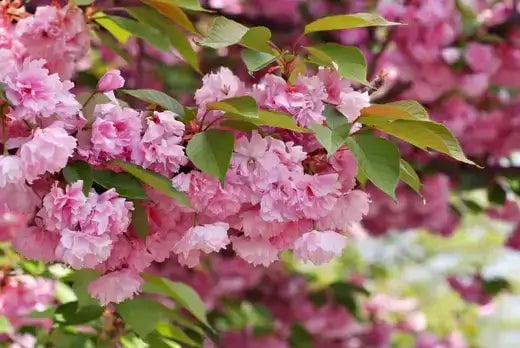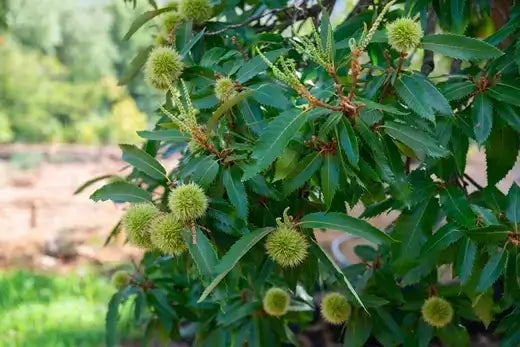What is a Black Walnut Tree?
Black walnut trees are known for their dark-colored wood. The trees have low branches that grow close to the ground and are typically about 75 feet tall when mature. The tree’s leaves are long and narrow and turn bright yellow in autumn.
How Do You Take Care of a Black Walnut Tree?
The best way to care for a black walnut tree is to prune it yearly, preferably in the spring. Ensure the tree has enough water, sunlight, and nutrients throughout the year.
How Much Sunlight Can a Black Walnut Tree Take?
A black walnut tree can take a lot of sunlight. They thrive in full sun but will also tolerate partial shade.
Do Black Walnut Trees Back Up Every Year?
Yes, black walnut trees are perennials. They will come back every year, but they will also have a few years between the years they produce nuts.
What Does a Black Walnut Tree Look Like?
A black walnut tree is tall with strong, spreading branches and finely-toothed leaves. It has yellow-green flowers that grow in clusters at the base of the leaves.
Where Do Black Walnut Trees Grow?
Moist, well-drained, acidic soil is where black walnuts grow best. They can tolerate a range of pH levels from 5.0 to 7.2.
What Are the Environments in Which Black Walnut Trees Grow?
Black walnut trees grow in nutrient-rich environments and have a good water supply. These trees can tolerate full sun or partial shade, but they need plenty of sunlight to produce fruit.
Are Black Walnut Trees Toxic?
Black Walnut Tree contains juglone, a chemical that can be toxic to some animals. So, it is essential to ensure they do not overeat the leaves or bark of black walnut trees.
How Do You Grow a Black Walnut Tree?
Just plant a seed in rich, well-drained soil and keep it watered. Once it sprouts, it gives plenty of sun and shade during different stages of growth.
How Do You Care for a Black Walnut Tree?
Prune your tree in the winter, as it will be less likely to absorb too much moisture from the soil. Again, fertilize your tree once every year in the early spring using a slow-release fertilizer.
How Did Black Walnut Trees Get Their Name?
Black walnut trees have their name because of the dark, rich color of the wood.
Ways to Use Black Walnuts from a Black Walnut Tree
The black walnut tree (Juglans nigra) attracts attention because of its beautiful appearance and superior wood but earns special recognition for the nuts it bears. People have used these nuts for centuries in cooking, medicinal practices, and home uses. If you possess a mature black walnut tree in your yard or if you can obtain these nuts from a nearby source, this guide presents several methods for utilizing this versatile resource.
Black walnuts earn their reputation from their robust, earthy taste that exceeds the subtlety of English walnuts. These nuts improve both sweet and savory dishes because of their unique taste. A simple method for eating black walnuts involves cracking their hard shells and consuming the raw kernels inside. The hard shells of these nuts require either special tools or much patience to crack. Consumers benefit from black walnut-specific hammers or nutcrackers because these tools open tough shells effectively. After breaking the shells, you can use the raw kernels to enhance salads, desserts, and snack mixes with their firm, unique crunch.
Baking recipes such as hearty loaves, quick breads, and cookies benefit significantly from black walnuts. The strong taste of these ingredients holds up when mixed with chocolate, coffee, and molasses without getting lost. Add a decadent, earthy flavor twist by folding chopped black walnuts into banana bread or oatmeal cookies. These nuts complement spices, including cinnamon, allspice, and nutmeg, making them ideal for festive fall and winter desserts. The black walnut pie variation stands out as a unique replacement for the traditional pecan pie by highlighting the distinctive flavor of walnuts.
Nut butter made from black walnuts represents a creative culinary application. Creating black walnut butter at home offers fresh production and customizable ingredients such as sweeteners and salt. Lightly toast the nuts and process them using a food processor or a blender until they reach a smooth, creamy consistency. You can enjoy black walnut butter spread on toast, blend it into oatmeal, or use it as a cookie filling. The homemade black walnut spread provides a pure taste that reflects the authentic flavor of the nut.
People use black walnuts in both cooking and traditional medical practices. The green outer covering of the hulls has historically served as the base for tinctures and extracts thought to demonstrate antifungal and antimicrobial effects. Black walnut hull tinctures have been traditionally used to support digestive health and fight specific infections. Current research continues to evaluate black walnut products, which have established documentation in holistic health traditions. Users should seek medical advice before using any remedy.
Black walnuts provide a frequently ignored benefit through their capability as natural dyes. The husks deliver rich brown and tan shades that enhance yarn, fabric, or paper with their natural color. To explore natural dyeing with black walnut husks, boil them in water, then remove any solid pieces before soaking the fabric you want to dye in the liquid. Varying the soaking time or adding substances such as iron provides different color shades.
Black walnut trees yield nuts that serve multiple purposes. When used in culinary arts alongside their roles in natural medicine and fabric dyeing, the unique taste of these nuts demonstrates their unique link to nature's vast resources. A satisfying experience with black walnuts results from proper harvesting and handling techniques.
Read more

What Is a Kwanzan Cherry Tree?It is a deciduous flowering cherry tree that produces white blossoms in spring. Kwanzan cherry trees grow to be around 30 to 40 feet tall, and they are known among gar...

What Is a Chinese Chestnut Tree?Chinese chestnut trees are breathtakingly beautiful, with their shimmering autumn foliage and bountiful white blossoms so numerous that the ground beneath them looks...



